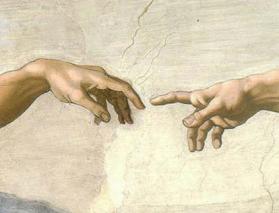Balthasar resolves the dilemma between rationalistic and fideistic approaches to faith and reason by identifying a common flaw in them, and by proposing an aesthetic solution.
The common flaw, he thinks, is that both rationalists and fideists “are wont to call the historical facts of revelation ‘signs,’ and to think of them as ‘pointes’ (quite capable ones, to be sure) to something mysterious which lies behind them and which must be believed.” Thus, there is “a parallelism of ostensive sign and signified interior light.”
He argues that “this dualism can be abolished only by introducing as well the thought-forms and categories of the beautiful. The beautiful is above all a form, and the light does not fall on this form from above and from outside, rather it breaks forth from the form’s interior. Species and lumen in beauty are one, if the species truly merits that name . . . . Visible form not only ‘points’ to an invisible, unfathomable mystery; form is the apparition of this mystery, and reveals it while, naturally, at the same time protecting and veiling it. Both natural and artistic form has an exterior which appears and an interior depth, both of which, however, are not separable in the form itself. The content (Gehalt) does not lie behind the form (Gestalt) but within it. Whoever is not capable of seeing and ‘reading’ the form will, by the same token, fail to perceive the content.”
This is extremely helpful in several ways: It suggests that the interminable debates about faith and reason arise because both sides assume a basic conception of historical events; it highlights the central importance of theories of signs; and it provides a neat aesthetic analogy to resolve the question.











